Inspired by conversations on the Food52 Hotline, we're sharing tips and tricks that make navigating all of our kitchens easier and more fun.
Today: Are you feeling overwhelmed by the wide variety of noodles available? Use our guide to ease your anxiety and become a more adventurous noodle eater.
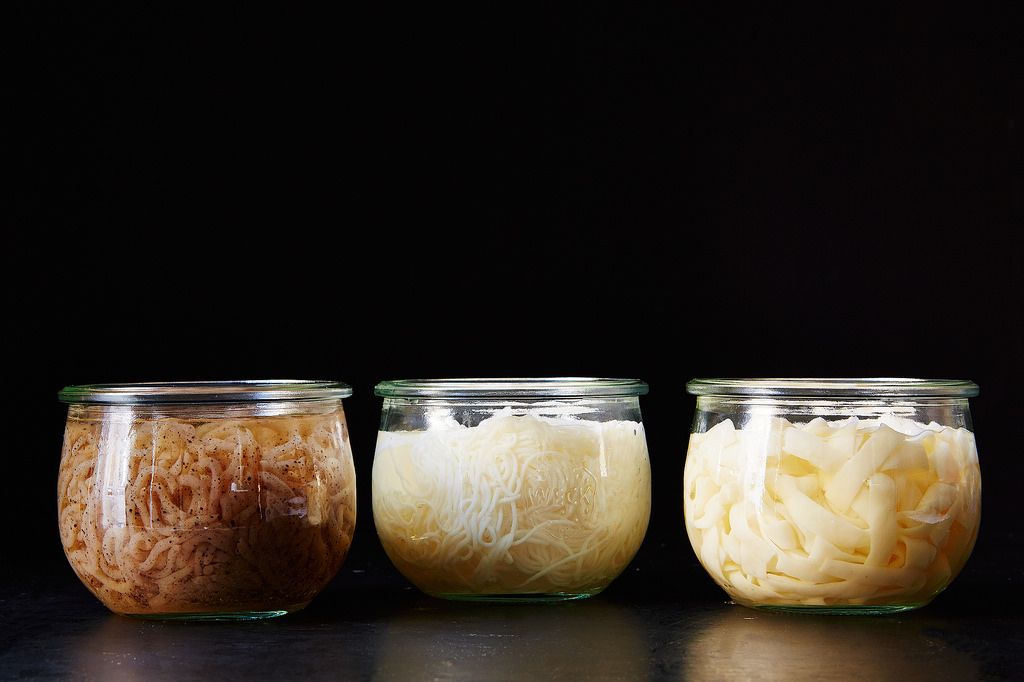
These days, we have more access to foods from all parts of the world than ever before. Noodles are no exception. Every one of your friends (and their mom) has eaten a highly-crafted bowl of ramen, and lo mein is no longer synonymous with the take-out container aging in your refrigerator.
But with this great opportunity comes great responsibility. And for someone who didn't grow up with these foods on the table, it can be overwhelming to identify the different kinds of noodles, let alone optimize their preparation.
We hope that this guide -- which calls out some of the most common types of noodles (or those we could find, somewhat easily, in New York City) -- will help you to be more adventurous when it comes to your soups, stir-fries, and salads. Go ahead and grab a bundle of mung bean noodles or take a pack of fresh ramen from the refrigerator -- it's time to expand your noodle knowledge.
First, what do you feel like eating?
- If want a cold noodle salad, make a batch of soba, somen, rice sticks, rice vermicelli, lo mein, or mung bean threads.
- If you're more interested in soup, use soba, udon, ramen, won ton noodles, or shirataki.
- Stir-fries are great with lo mein, chow mein, vermicelli, shirataki, or jap che.
- Or, if you're feeling like you need deep-fried, crunchy noodles to complete your dish (or to snack on), pick chow mein or mung bean threads.
Here's our guide to the 12 varieties, so you can identify them at the market and cook them right:
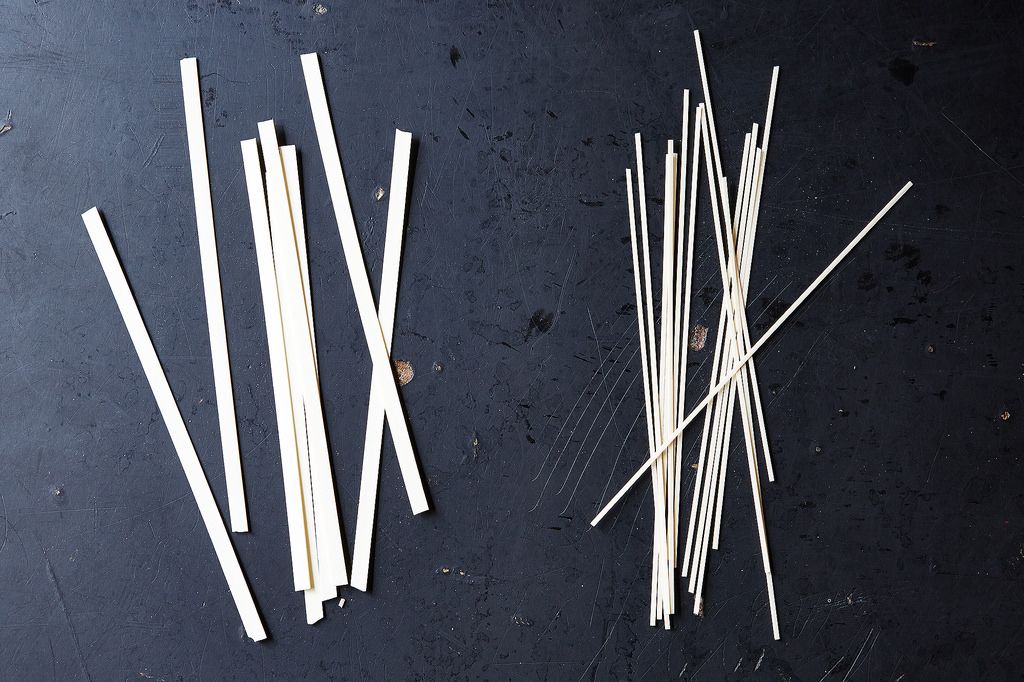
1. Lo mein noodles (thick, left, and thin, right):
Dense and wheaty, these noodles hold up well to thick sauces and large pieces of meat or vegetable. Use cooked lo mein noodles in cold salads or stir-fries. Try adding cooked noodles to a wok of sautéed pork and Chinese celery, or mix them with cooked vegetables, Tianjin preserved vegetable, sesame oil, and soy sauce for a refreshing, packable salad. You can also use lo mein to make Dan Dan noodles, traditional or vegetarian.
To cook, boil lo mein noodles in salted water for 3 to 5 minutes (if you’re using fresh noodles, cooking time will be shorter, between 2 and 4 minutes), then drain, rinse with cold water, and toss with a bit of peanut or sesame oil.
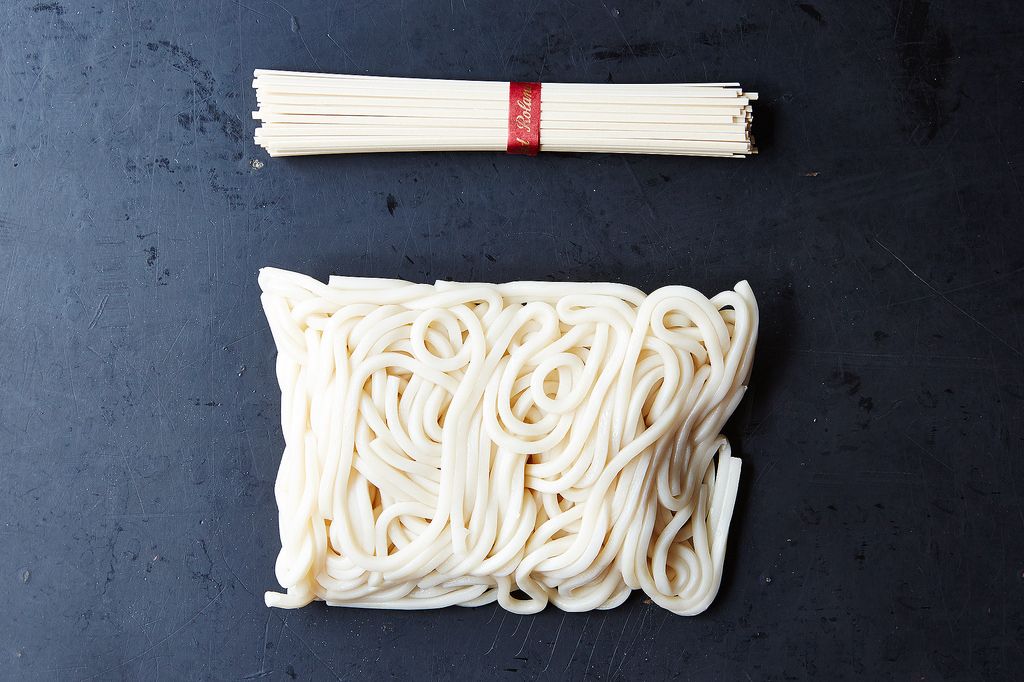
2. Udon noodles (dried, top, and fresh, bottom):
The slippery and chewy texture of these Japanese noodles makes them popular in soups, stews, and noodle bowls. They’re too soft to stir-fry. Instead, try mixing them peanut sauce and sautéed kale, or using them as a noodle in a less-traditional take on chicken noodle soup.
Cook fresh udon noodles in boiling water for 1 minute, then rinse. To cook dried noodles, bring a pot of water to a boil, add the noodles, and return the water to a boil. Simmer the noodles for 5 minutes, drain, and rinse with cold water.
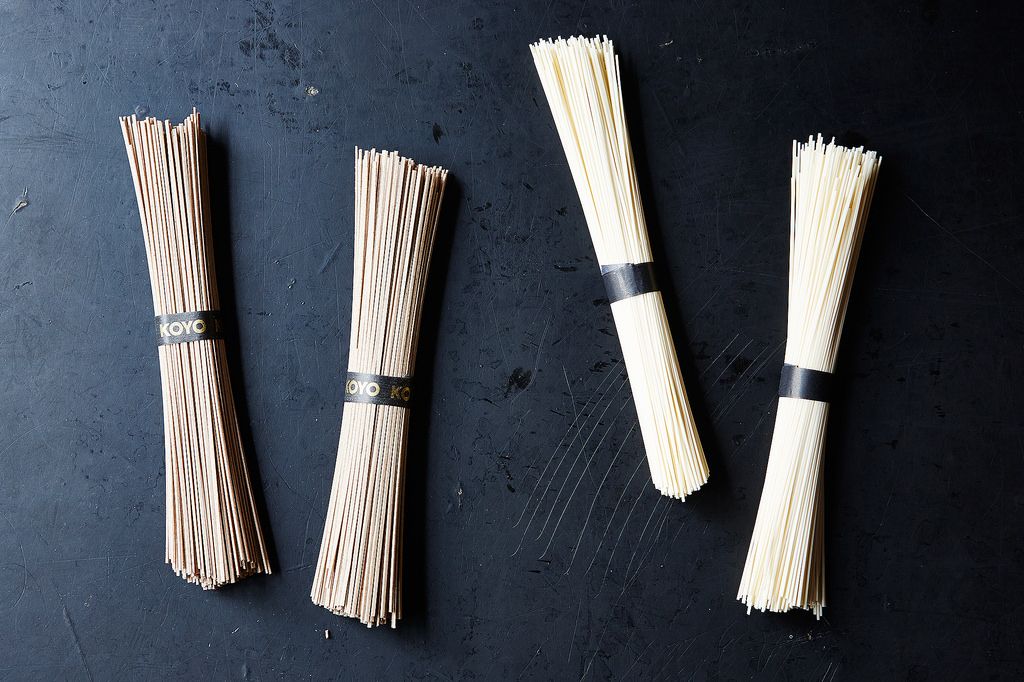
3. Soba (left):
An earthy, savory noodle made from a combination of wheat and buckwheat flours, soba is commonly found in cold soups, but can also be eaten in hot mushroom- and seaweed-based broth or lightly dressed with rice vinegar, maple syrup, and sesame oil and tossed with steamed vegetables.
To cook, add dried noodles to boiling water for 5 to 7 minutes (reduce time for fresh noodles). Be sure to cook, drain, and rinse, before adding them to a broth or a salad.
4. Somen (right):
Thin somen noodles are similar to soba, but they’re made entirely with wheat flour and the dough, made pliable with the addition of oil, is stretched very thin. Somen are almost always served cold and accompanied by a delicate-flavored dipping sauce, but you can try them in a hot, turmeric-miso soup in colder weather. Or dress with a combination of soy sauce, fish sauce, and rice wine vinegar and top with strips of marinated tofu and slices of pickled cucumber.
Nagashi-sōmen, or “flowing somen,” is a summer tradition in some parts of Japan. Somen are placed in water flowing in a bamboo chute and diners fish for the noodles with chopsticks as they pass by, dipping any they catch into a cool broth before eating them. Please let us know if you try this at home.
Cook some in boiling water for 2 to 4 minutes before draining, rinsing, and adding to soups or tossing with sauce.

5. Ramen (dried, left, and fresh, right):
Once you’ve had your fill of ramen in soup, experiment with using ramen outside of broth, too. Use cooked ramen as a bed for sautéed tofu and mushrooms in a chile-garlic sauce, or eat them cold, dressed with spicy chili oil. Or go completely rogue and use the noodles without boiling them: Bake them into a snack mix with wasabi peas or just eat them raw like David Chang.
Cook fresh ramen in boiling water for 2 to 3 minutes. Cook dried ramen, which is often deep-fried before drying to extend shelf-life, in boiling water for 4 to 6 minutes.
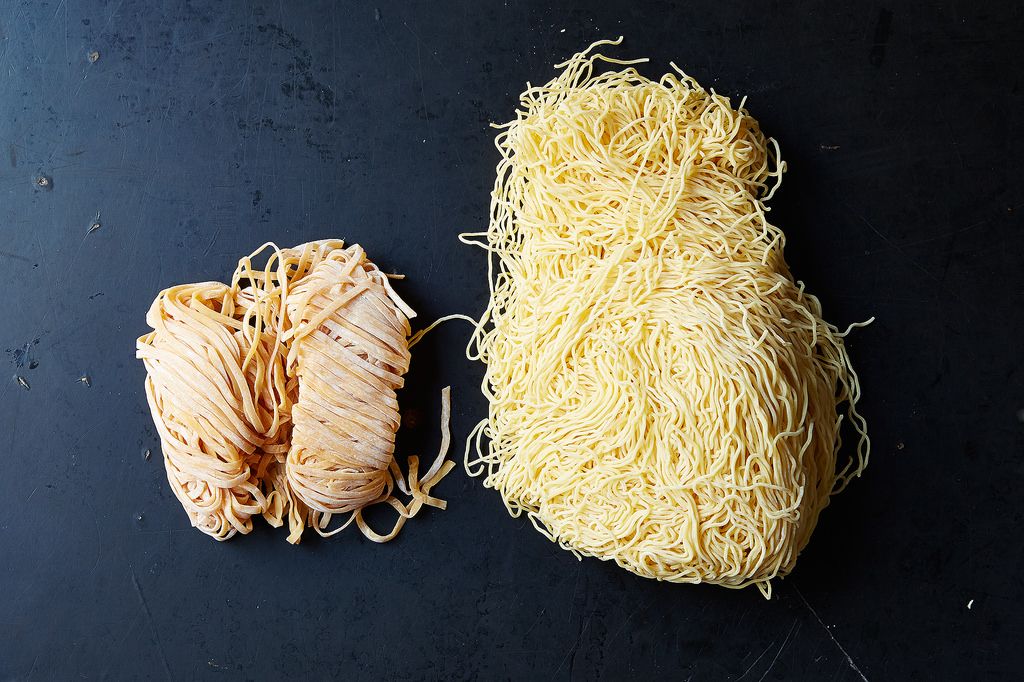
6. Wonton noodles (left):
Pour hot soup over these wonton noodles, which are made from the same dough as wonton dumplings, or stir-fry them with a bit of stock for a less brothy dish.
Wonton noodles should be cooked in boiling salted water for 30 seconds, then drained and rinsed under cold water until cool.
7. Chow mein noodles (right):
These are typically pan-fried in dishes where a firm, chewy noodle is desired, or deep-fried to form a bed of crunchy noodles. Because you'll likely find them parboiled, they can be added directly to the wok, no boiling or soaking necessary.
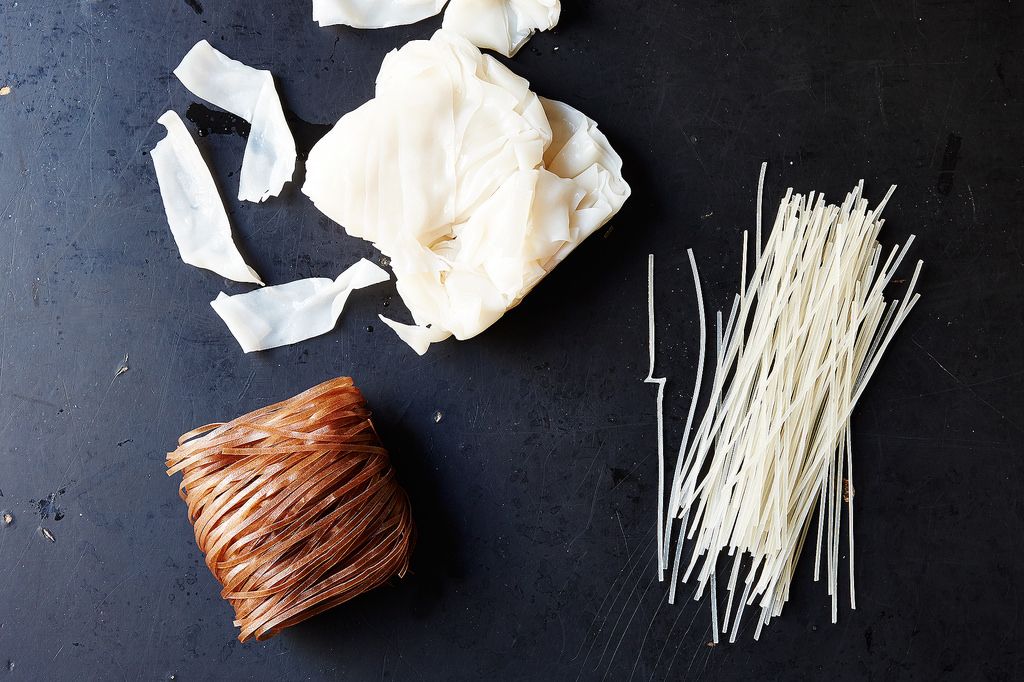
8. Rice noodles (brown rice, left; rice flake noodles, top; rice sticks, right):
Add the rice sticks to pho, use them in pad Thai, or enjoy them in a cold salad with thinly sliced carrots, red peppers, and cabbage -- topped with cooked meat or shrimp, if you like. Use thicker rice noodles or rice flake noodles in dishes with heavier sauces, like pad see ew or drunken noodles.
To prepare, cover the noodles with very hot tap water, making sure they're all submerged, and let sit for 10 to 15 minutes, stirring several times throughout. Check them frequently so that they don’t become mushy. Drain, rinse with cold water, and drain again. Undercook the noodles if you’re planning to stir-fry them; let them cook a bit longer if you won’t be doing any additional cooking.
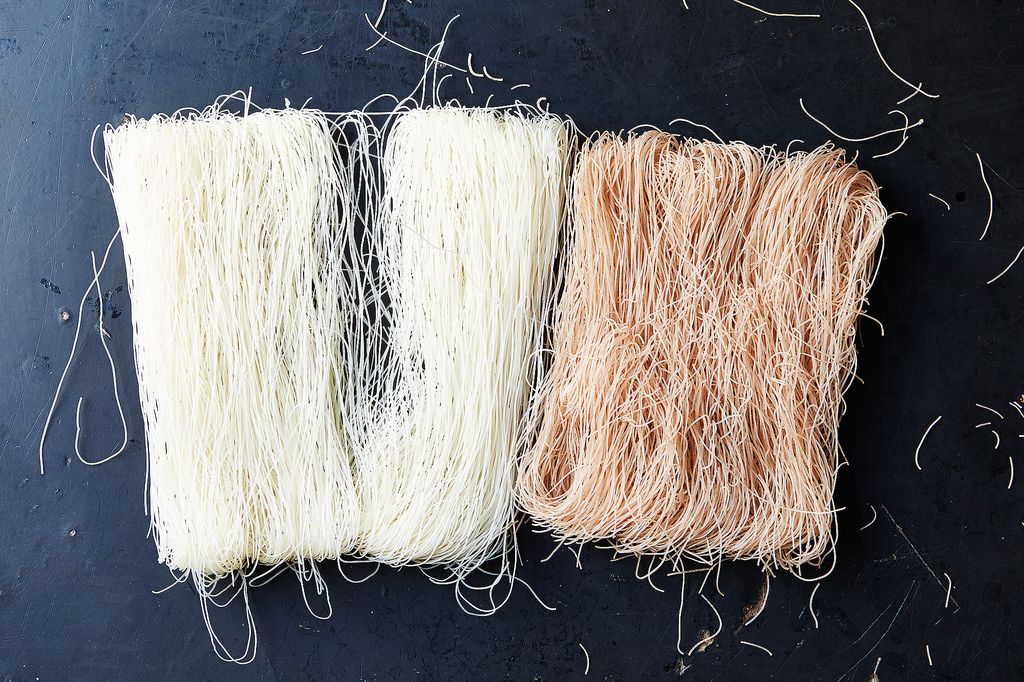
9. Rice vermicelli (white, left, and brown, right):
Once the noodles are soft, you can use them in place of rice sticks. Add them to soup, or sauté vegetables in a wok and when they’re soft and caramelized, add the cooked noodles and stir-fry until warmed-through. Dress with a mixture of sesame oil, soy sauce, fish sauce, chile paste, and brown sugar, and top with fried tofu. Or skip the sautéing and simply dress the cold noodles, mixing them with grated raw vegetables like carrots and beets and topping with mixed herbs and chopped nuts.
Cook these just as you would rice sticks, but since they’re so much tinier, they’ll need only 3 to 4 minutes to soften up.
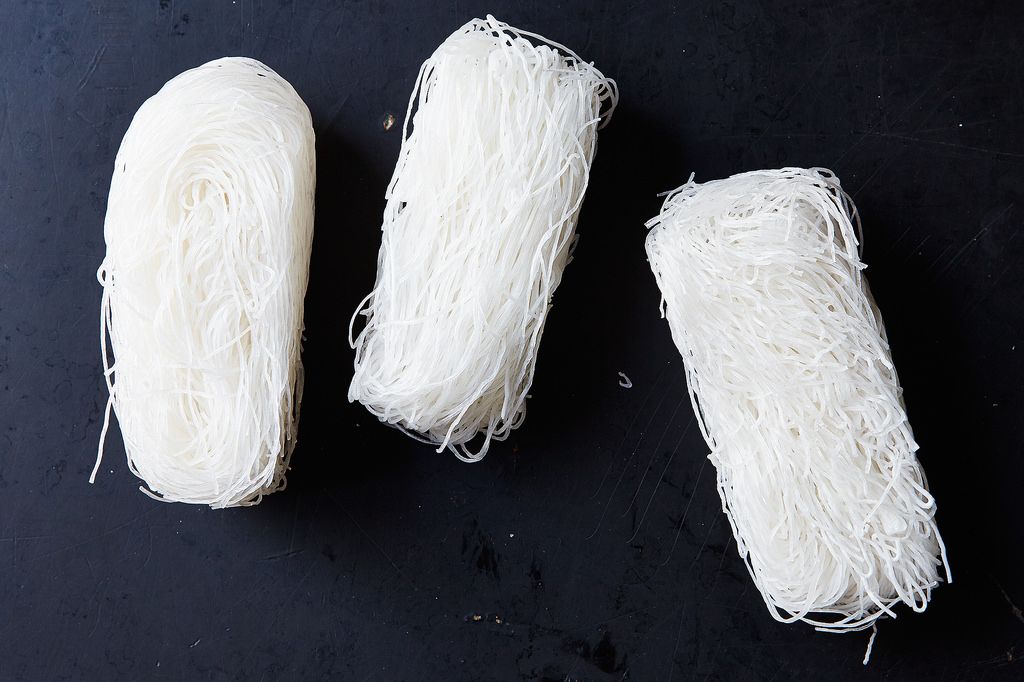
10. Mung bean threads:
Otherwise known as cellophane noodles, glass noodles, and bean thread noodles, these are made from the flour of mung beans and are sold in bundles. They’re slippery in texture and perfect to add to Thai or Vietnamese stir-fries and soups. For a crunchy texture, you can break up the bundles and fry handfuls of noodles in oil, removing them as soon as they puff up and expand.
To prepare for salads or stir-fries, submerge the noodles in very hot water and let soak for a couple of minutes, just until tender. Do not soak the noodles if you are planning to deep-fry them or add them to soup.
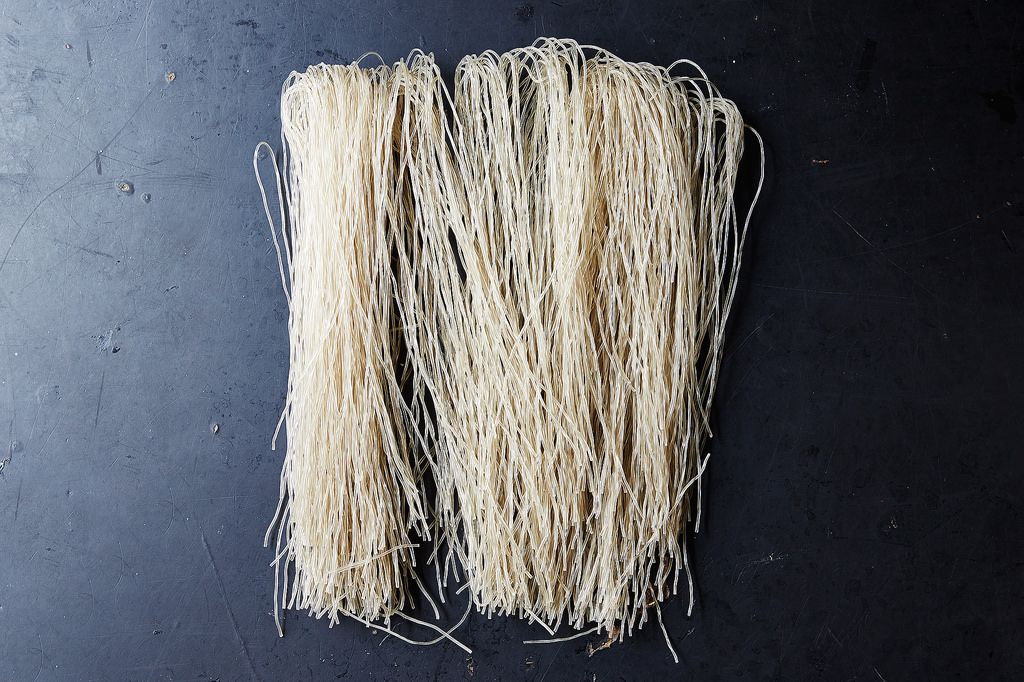
11. Jap che:
These long, strand-like noodles are made from sweet potato starch and are most commonly used in the Korean dish of the same name, jap che (also spelled japchae). In jap che, the noodles are stir-fried in sesame oil with vegetables, like carrots, mushrooms, scallions, and red pepper, and beef and topped with sesame seeds and thin slices of chile. The dish is served hot or cold on special occasions, often atop of bed of rice (in which case, it’s called jap che-bap).
To cook, add the noodles to a large pot of boiling water, cover, and cook for 1 minute. Stir the noodles with a spoon to separate them, then re-cover the pot and continue to cook for 4 to 7 minutes, until the noodles are soft and chewy. Drain the noodles and, for an easier eating experience, use kitchen scissors to cut them a few times, then toss with a bit of sesame oil and soy sauce. Return them to the wok with the cooked vegetables and meat and cook until warmed through, 1 to 2 minutes, before serving.
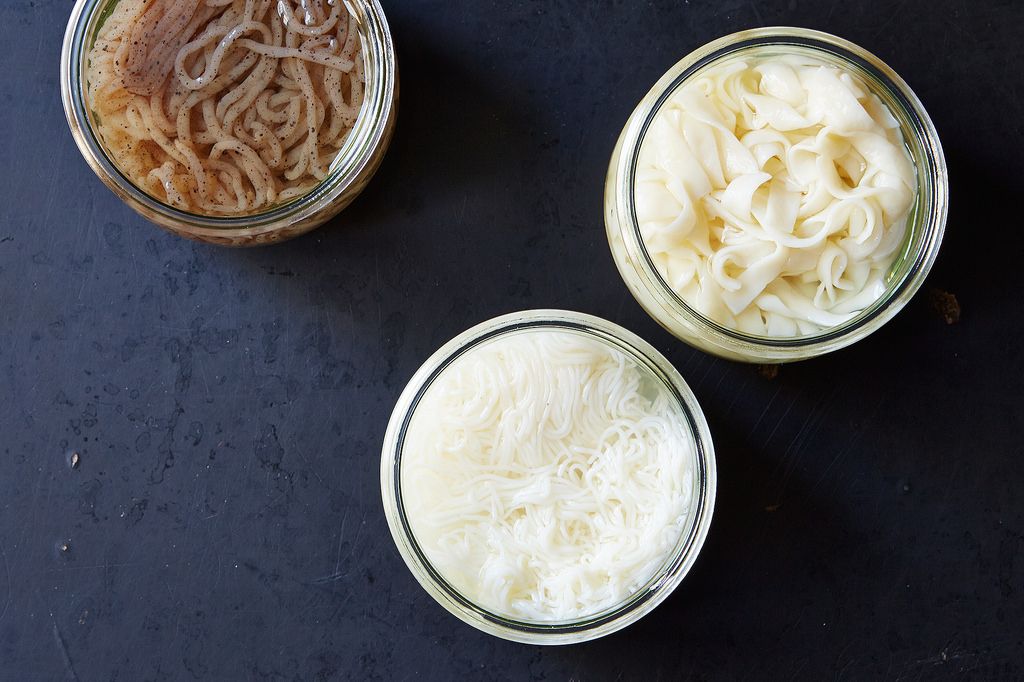
12. Shirataki (seaweed, left; "angel hair," middle; "fettuccine," right):
Shirataki have gained publicity in the U.S., where they’re marketed as “miracle noodles” because they have zero net calories and zero net carbs. J. Kenji López-Alt of Serious Eats loves these noodles not because of their nutritional value (or lack thereof) but because of their “slick and slippery texture” that's “sort of like a cross between spaghetti and Chinese green bean jelly.” He uses them in cold noodle salads, explaining that, because they have no surface starch, they neither stick together nor thicken the sauce. That means that shirataki won’t muddle your sauce’s texture or dull down its flavor.
Rinse these noodles in cold water for 30 seconds before cooking to eliminate the taste of the packaging liquid. Simmer the noodles for up to 3 minutes, then drain. You can find traditional shirataki, which is made with glucomannan starch extracted from devil’s tongue yams, as well as shirataki that’s been enriched with tofu or seaweed.
Photos by Mark Weinberg
What's your favorite type of noodle? And which ones did we miss? Let us know in the comments below!












See what other Food52 readers are saying.